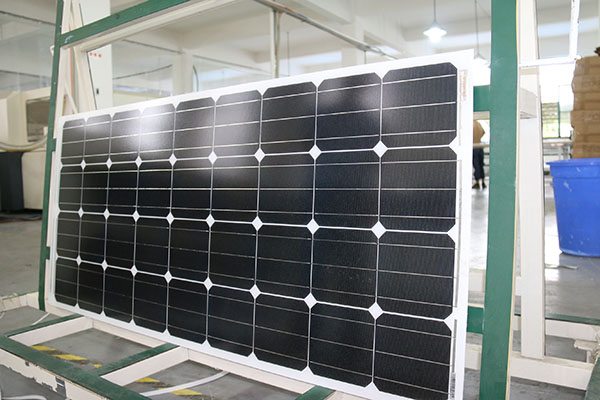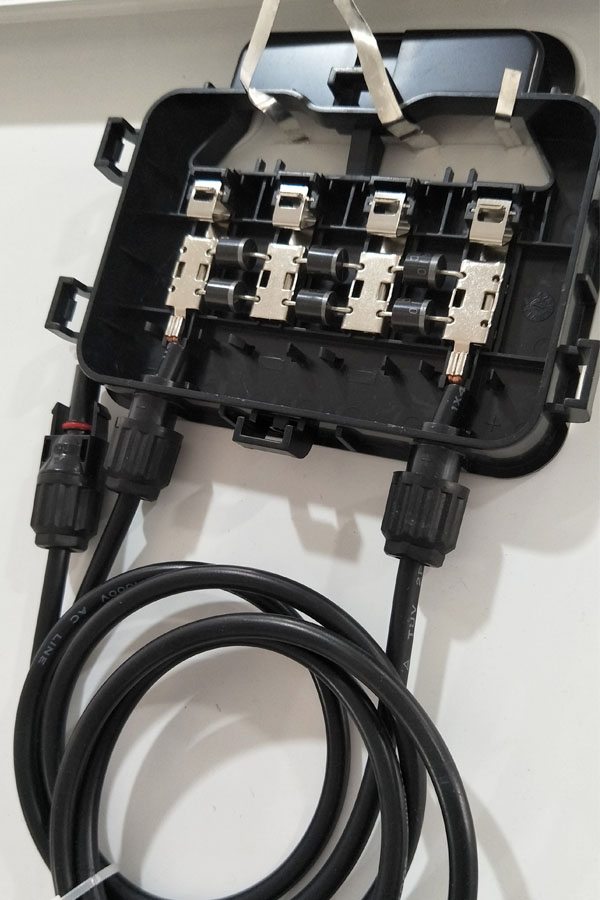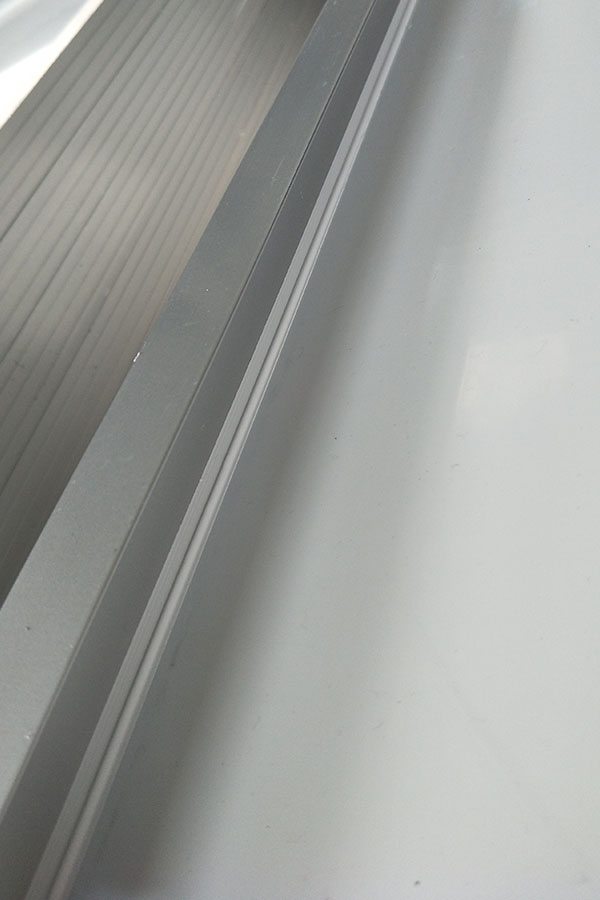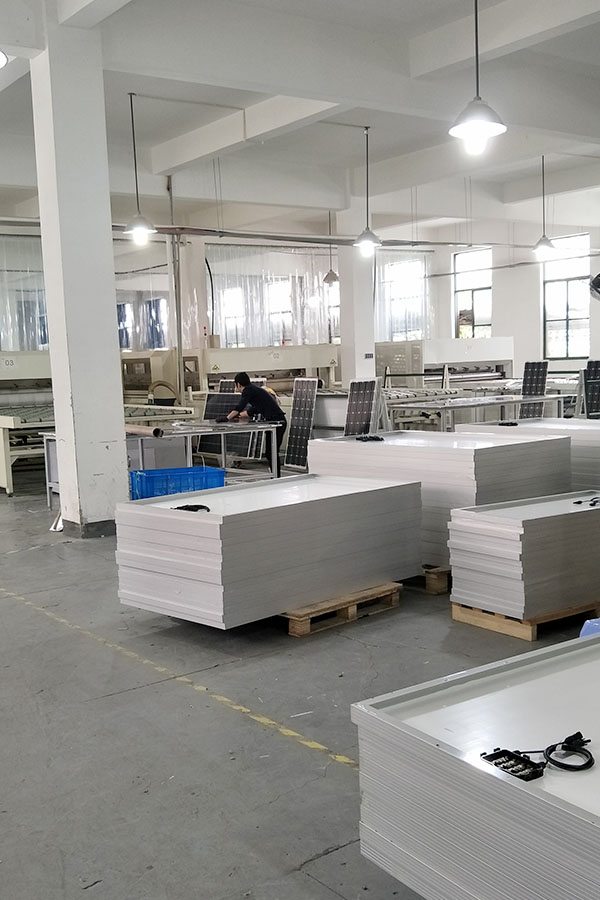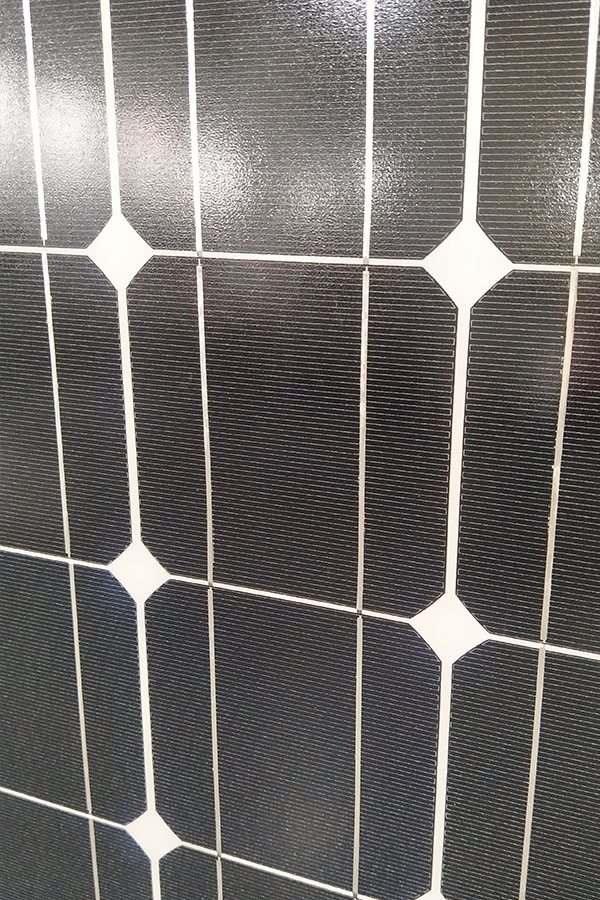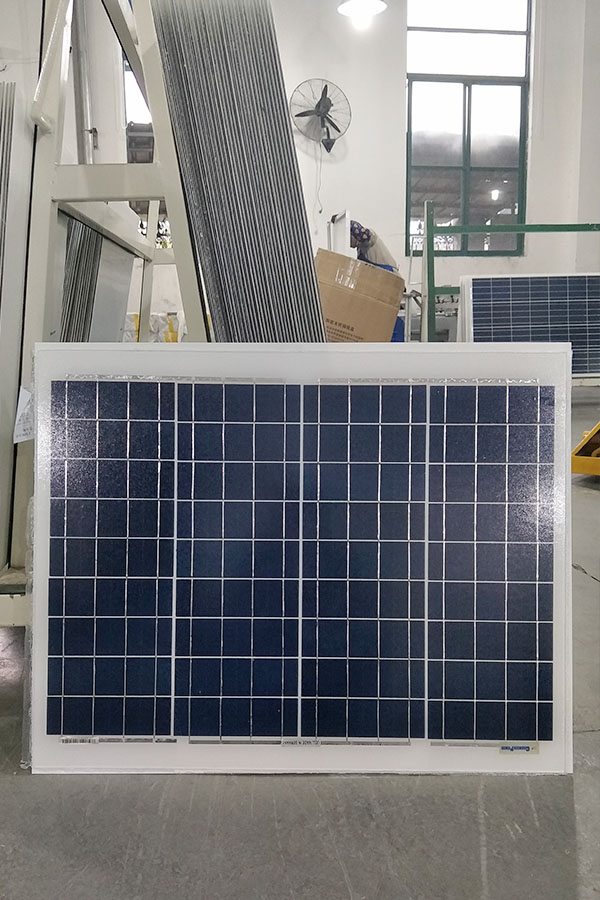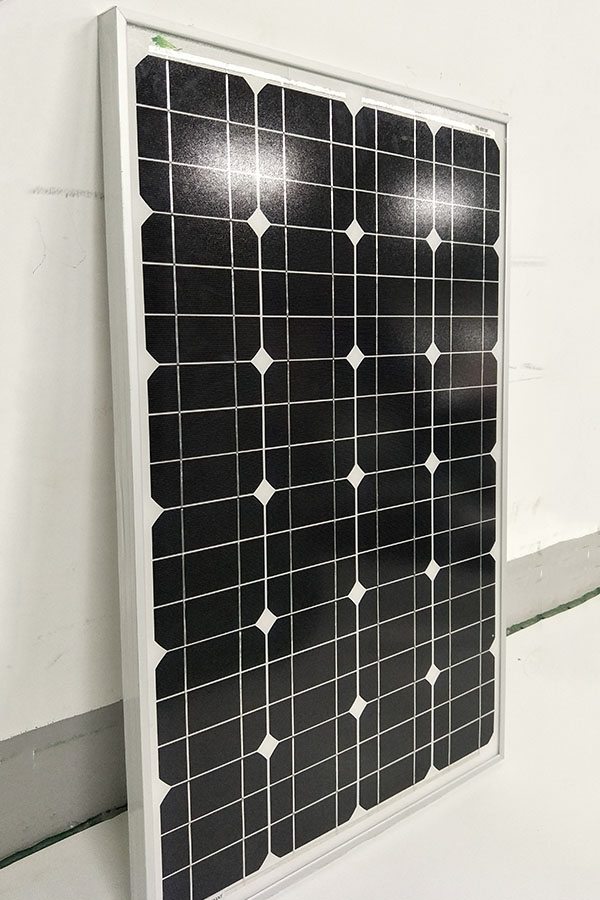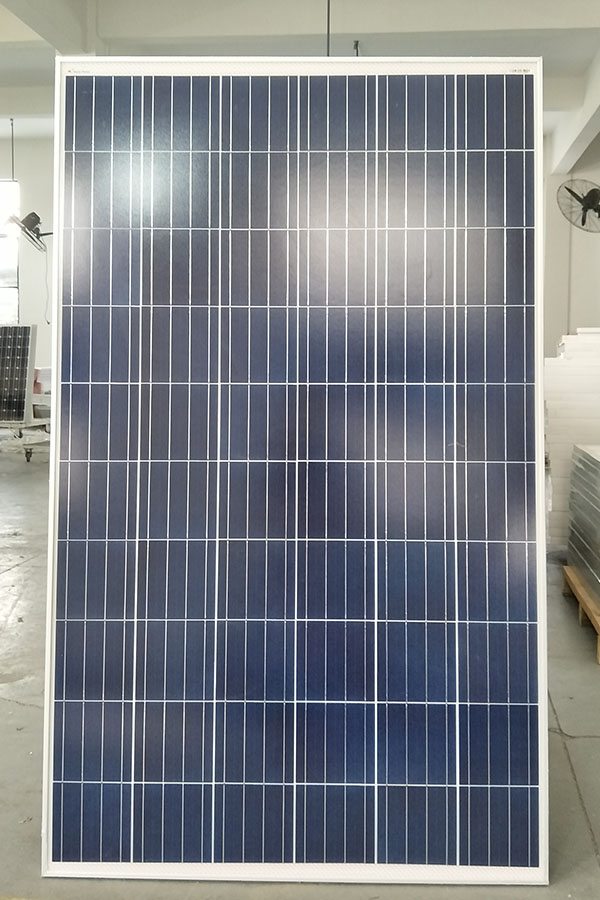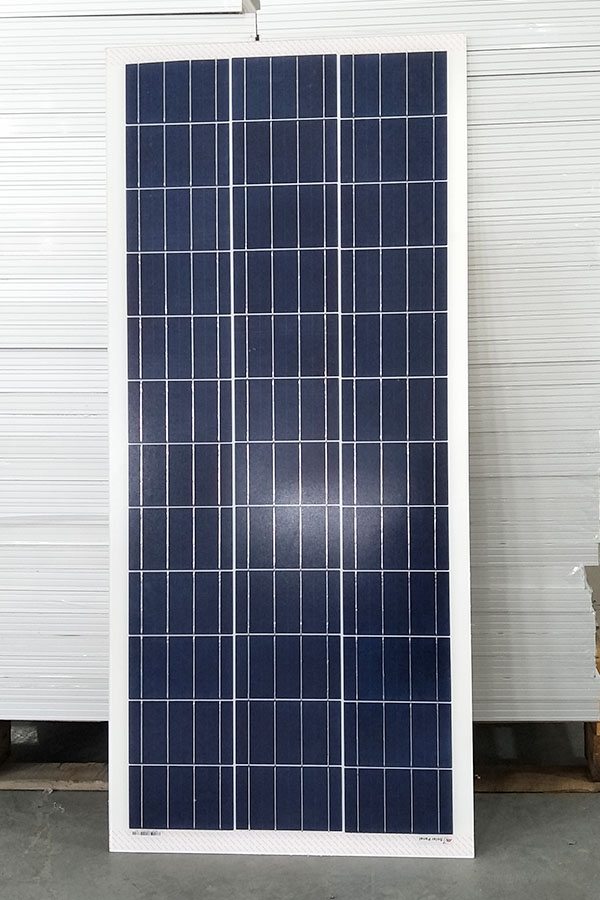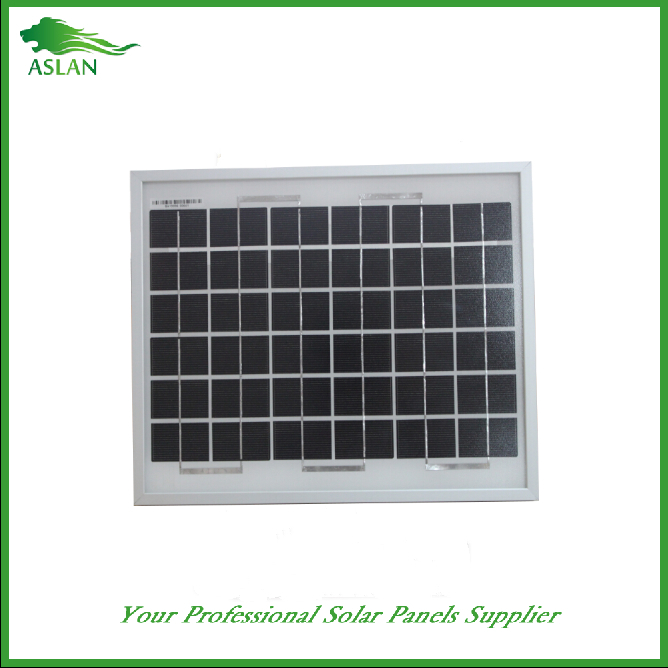Cheap PriceList for Mono-Crystalline 180W Solar Panel Factory in Houston
Short Description:
Our company promises all users of the first-class products and the most satisfying post-sale service. We warmly welcome our regular and new customers to join us for Cheap PriceList for Mono-Crystalline 180W Solar Panel Factory in Houston, Looking to the future, a long way to go, constantly striving to become the all staff with full enthusiasm, one hundred times the confidence and put our company built a beautiful environment, advanced products, quality first-class modern enterprise and work hard!
Mono-Crystalline 180W Solar Panel
Technical parameter
Maximum Power(W) 180W
Optimum Power Voltage(Vmp) 36.42V
Optimum Operating Current(Imp) 4.96A
Open Circuit Voltage(Voc) 44.45V
Short Circuit Current(Isc) 5.44A
Mechanical Characteristics
Cell Type Mono-crystalline 125x125mm (5 inch)
No of Cell 72 (6x12pcs)
Dimensions 1580x808x35mm
Weight 14.5Kg
Front Glass 3.2mm,High Transmission, Low Iron,Tempered Glass
Junction box IP65 Rated
Output Cable TUV 1×4.0mm2/UL12AWG,Length:900mm
Temperature and Coefficients
Operating Temperature(°C): -40°C ~ + 85°C
Maximum System Voltage: 600V(UL)/1000V(IEC) DC
Maximum Rated Current Series: 15A
Temperature Coefficients of Pmax: -0.47%
Temperature Coefficients of Voc: -0.389%
Temperature Coefficients of Isc: 0.057%
Nominal Operationg Cell Temperature (NOCT): 47+/-2°C
Materials of solar panel
1).Solar Cell——Mono-crystalline solar cell 125*125mm
2).Front Glass——-3.2mm, high transmission, low iron, tempered glass
3).EVA——-excellent anti-aging EVA
4).TPT——-TPT hot seal made of flame resistance
5).Frame——anodized aluminum profile
6).Junction Box——-IP65 rated, high quality, with diode protection
Superiority: high quality anodized aluminum frame, high efficiency long life, easy installation, strong wind resistance, strong hail resistance.
Features
1. High cell efficiency with quality silicon materials for long term output stability
2. Strictly quality control ensure the stability and reliability, totally 23 QC procedures
3. High transmittance low iron tempered glass with enhanced stiffness and impact resistance
4. Both Poly-crystalline and Mono-crystalline
5. Excellent performance in harsh weather
6. Outstanding electrical performance under high temperature and low irradiance
Quality assurance testing
Thermal cycling test
Thermal shock test
Thermal/Freezing and high humidity cycling test
Electrical isolation test
Hail impact test
Mechanical, wind and twist loading test
Salt mist test
Light and water-exposure test
Moist carbon dioxide/sulphur dioxide
Solar Prisms for Concentrating Photovoltaic Systems (CPV) sales@dmphotonics.com
http://www.dmphotonics.com/Solar_Prism/SP.htm
Photovoltaic (PV) solar electric systems are a promising clean energy alternative to traditional sources of electricity generation. One of the biggest obstacles to the widespread deployment of photovoltaic systems is the fact that they are not cost competitive with traditional sources of electricity generation. Concentrating photovoltaic (CPV) solar cells–which use mirrors, prisms, and lenses to concentrate a large amount of sunlight onto a small area to generate electricity–can reduce the cost of PV systems.
Solar cells made of compound semiconductors such as gallium arsenide are very expensive. Usually very small cells are installed and various means such as mirrors, lenses, prisms, etc..are used to concentrate sunlight on the cells. Concentration photovoltaic technology (CPV) uses the solar radiation with an efficiency of 40%, double that of conventional solar cells
Del Mar Photonics design custom Concentrating Photovoltaic Systems (CPV) and supply variety of the optical components for CPV such as solar prisms shown in the picture.
hexagonal light pipes, optical rods
High Concentration Photovoltaic Panel (HCPV) – request for information
Solar Glass reflectors & optics for solar power generation & solar heating
Ultrafast studies of charge carrier dynamics in nanomaterials and relevance to solar energy conversion
CdTe Solar Cells
Other featured products:
Lithium Tantalate (LiTaO3)
Lithium Tantalate exhibits unique electro-optical, pyroelectric and piezoelectric properties combined with good mechanical and chemical stability and , wide transparency range and high optical damage threshold. This makes LiTaO3 well-suited for numerous applications including electro-optical modulators, pyroelectric detectors, optical waveguide and SAW substrates, piezoelectric transducers etc.
LiTaO3 wafer SAW grade – Lithium Tantalate, LiTaO3 – crystal – elements for pyroelectric detector – EOM – EO crystal – wafers – Lithium Tantalate Substrates for Pyroelectric Detectors – y-cut LiTaO3 – LiTaO3 properties – Electro — Optic Pockels Cells – Optical Waveguide Substrates – Pyroelectric Detector Substrates – Piezoelectric Transducers – wafers- Lithium Tantalate frequency filter – detector – Lithium Tantalate wafers and crystals – LiTaO3 thin substrates – cylindrical z-cut LiTaO3 crystal – online store
Sapphire components
Sapphire Circular Windows – Square & Rectangle – Rods
Sapphire & Ruby Rings – Sapphire & Ruby Balls – Sapphire & Ruby Nozzles
Sapphire Lenses – Ball & Seat – Special Products – Sapphire Vee & Cup Jewels
Sapphire Ceramics – Ceramic Sleeves – Ceramic Holes – Ceramic Rods
Sapphire & Ruby Orifices – Sapphire & Ruby Tubes – Sapphire Components
Sapphire Half Round Rod – Sapphire Windows – Rods & Tubes – Special Part
Sapphire Prism – 5x5x5 – Sapphire Chisel – Sapphire Square Rod
Generation of white-light continuum
Sapphire rods for HPLC: Agilent Technologies – Beckman Coulter, Inc. – Cecil Instruments – Dionex Corp – Hitachi, Ltd. – PerkinElmer, Inc. – Shimadzu Scientific Instruments – Thermo Fisher Scientific – Varian, Inc. – Waters Corporation
Vacuum viewport
Del Mar Photonics offer a range of competitively priced UHV viewports , Conflat, ISO or KF including a variety of coatings to enhance performance. Del Mar Photonics viewports are manufactured using advanced techniques for control of special and critical processes, including 100 percent helium leak testing and x-ray measurements for metallization control. Windows Materials include: Fused silica, Quartz , Sapphire , MgF2, BaF2, CaF2, ZnSe, ZnS, Ge, Si, Pyrex. Standard Viewing diameters from .55″ to 1.94 “.
Coating – a range of custom coatings can applied – which include
- Single QWOT
- Broad Band AR
- V coatings
- ITO
- DLC (Diamond like coating)
more details – request a quote – High-Vacuum System for High Power Lasers – AR Coated Zinc Selenide Vacuum Viewport
Zinc Selenide optical components
ZnSe window diam 12.7 mm, thickness 1 mm – diam 20 mm x 3 mm thick – diam 25.4 mm x 3 mm thick
ZnSe Zinc Selenide meniscus lenses
ZnSe Zinc Selenide Plane-Convex lenses
ZnSe Zinc Selenide High Power Plane-Convex lenses
related product: Gold Plated Silicon Mirrors
IR windows for a thermal imager on a vacuum system – FTIR|
IR Beamsplitters: ZnSe 70/30 beamsplitter for CO2 laser – 50/50 at 45 degrees
ZnSe window mounted in a 4.5″ conflat for an IR photography application
ZnSe prisms – pair of prisms for pulse compression – ZnSe cross-disperser prisms – ZnSe rhomb
cleaning – vacuum viewport – AR coated
Broadband AR coating (BBAR 350-700nm, 450-800nm, 650-1050nm, 1050-1620nm) for Vacuum Viewport
IR UHV view ports with Broad Band Anti-reflection (BBAR) coating for IR wavelength range
ZnSe viewport CF35 UHV 2.0 to 5.0 micron wavelength range
Elliptical optics from ZnSe
ZnSe window for an infrared temperature detector
Arkema, Inc. manufactures Kynar® film for use in the protection of photovoltaic modules. Kynar® film provides long term protection of PV modules and when used in the construction of PV back sheet provides for long term UV and weathering protection of the underlying PET dielectric layer. PET alone will not provide enough resistance to UV and weathering. Kynar® film is also used for front sheet protection of solar modules and is completely resistant to UV degradation, will not chalk or yellow, has excellent dirt shedding properties and very high light transmittance. Kynar® film is also very tough and has excellent mechanical properties and abrasion resistance. Kynar® PVDF polymer has been used for over 40 years in the architectural coatings market and is well recognized as the worlds most weather resistant coatings polymer (Kynar® 500). This same excellent weathering performance is seen with Kynar® film for front sheet and back sheet applications. Protect your investment, by specifying Kynar® film.
Arkema’s Luperox® organic peroxides are the standard cross-linking agent used in the photovoltaic market for ethyl vinyl acetate (EVA) encapsulants. With a wide range of Luperox® offerings, Arkema can assist in enhancing the EVA cure cycles and physical properties.
Arkema’s Certincoat® chemistry and deposition equipment are utilized to produce transparent conductive oxides (TCO) for the photovoltaic thin film market. Arkema offers low and high haze TCOs with good transmission of light, durable coatings, and sheet resistance applicable for thin film application.
Apolhya(TM) Solar is Arkema’s next-generation thermoplastic encapsulant for the photovoltaic market. Produced by a proprietary process, Apolhya’s unique co-polymer structure produces spontaneous ordering at the nano-scale, imparting enhanced thermomechanical and adhesive performance while maintaining optical clarity and good moisture vapor barrier properties.
Sartomer Acrylate and Methacrylate monomers can be used in UV coating and curing applications for PV modules.
